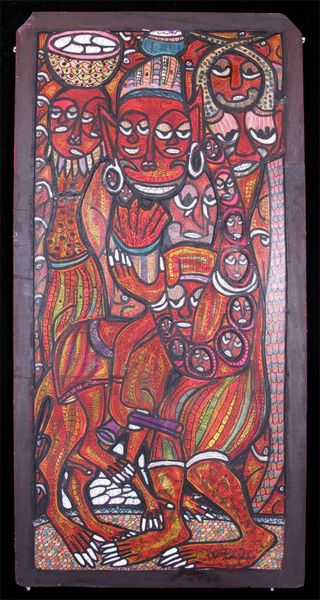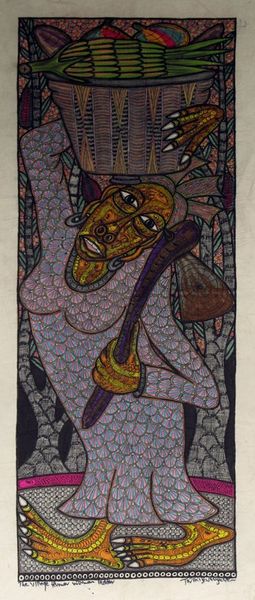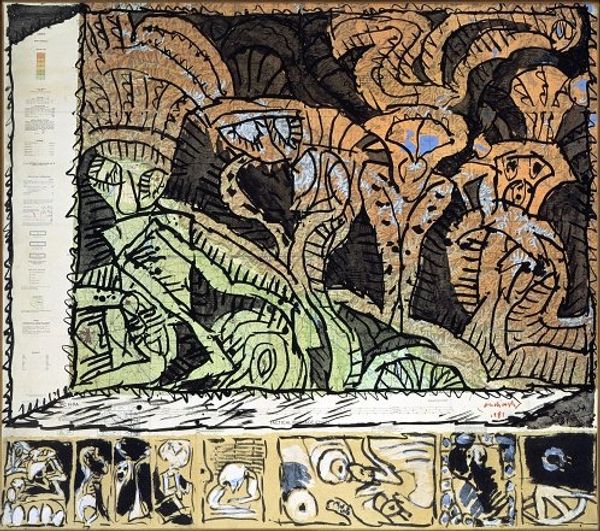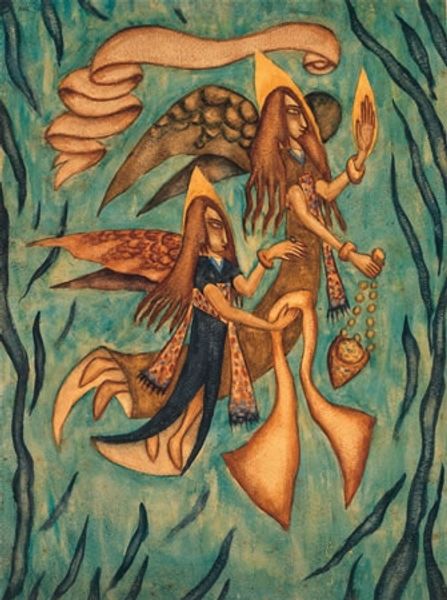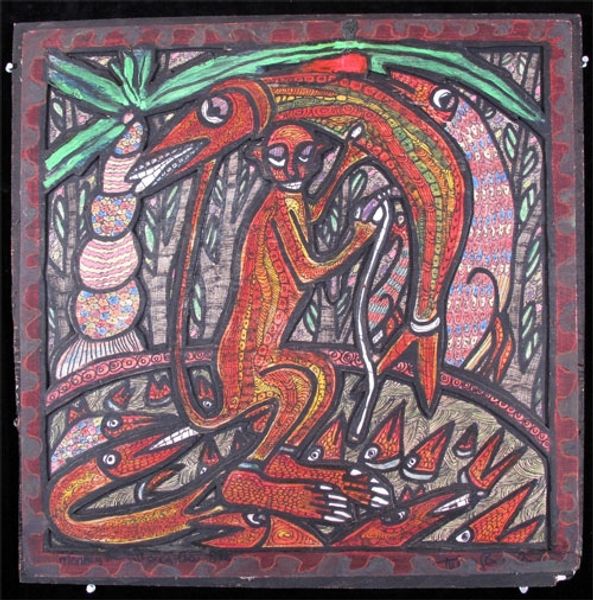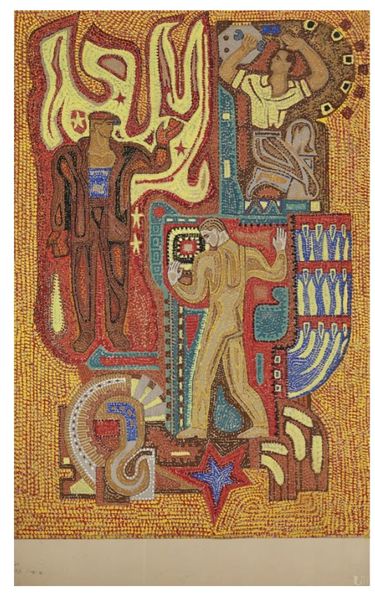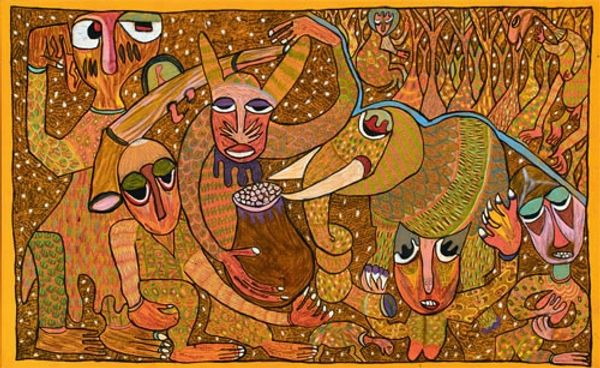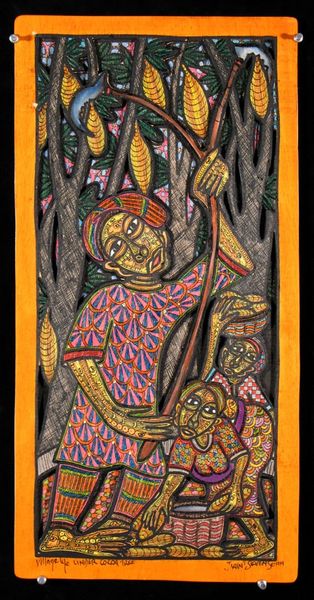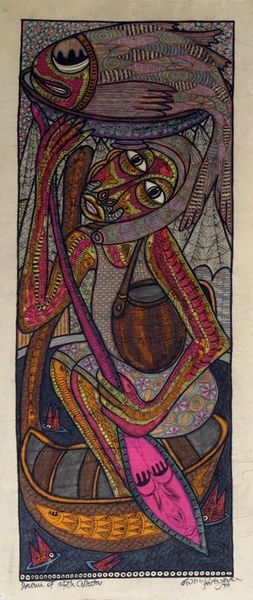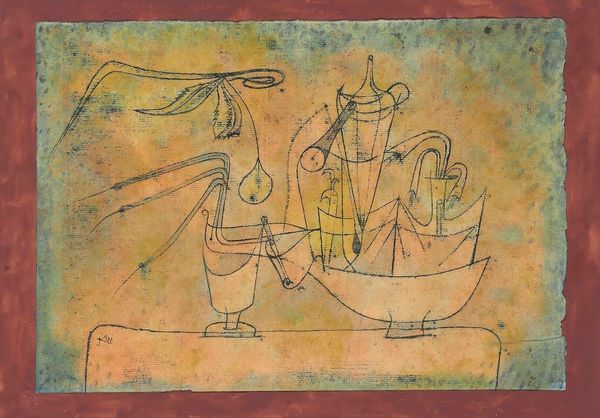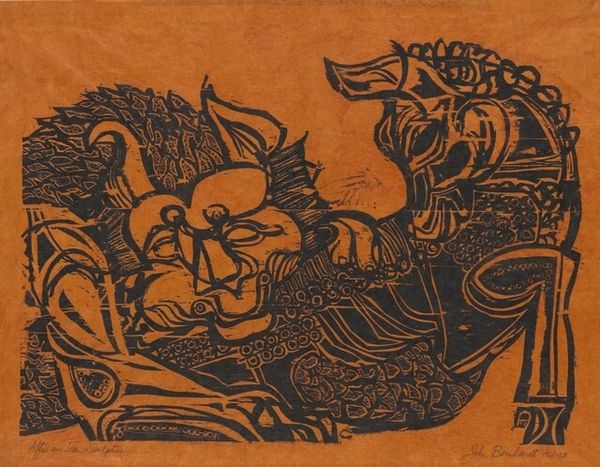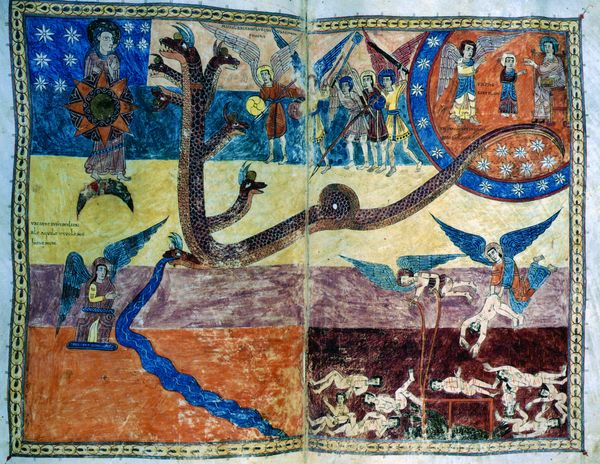
#
natural stone pattern
#
abstract expressionism
#
naturalistic pattern
#
abstract painting
#
loose pattern
#
pattern
#
fluid art
#
abstract pattern
#
funky pattern
#
pattern in nature
Copyright: Twins Seven Seven,Fair Use
Curator: Immediately striking is the sheer energy radiating from this composition. What's your impression? Editor: Overwhelming, actually. All those serpentine lines and figures crammed together create a sense of… vital chaos. The palette leans heavily on ochre, brown and gold, giving it an earthy, grounded feel. Curator: Twins Seven Seven created this piece, entitled "Three Wise Ocean Gods: Air, Sea, Nature Controller" in 1990. He was a prominent figure in the Nigerian art scene, associated with the Osogbo School. His work is steeped in Yoruba mythology. Editor: Mythology explains a lot. The figures have a deliberately stylized quality—their exaggerated features remind me of masks and ritual objects. Note how line is used to both define form and create texture, almost like an intricate tapestry. Curator: Precisely. He built his artistic identity crafting paintings and sculptures that channelled Yoruba folklore and spirituality. Twins Seven Seven emerged in postcolonial Nigeria where artists grappled with decolonization through cultural traditions. The Osogbo artists looked to pre-colonial beliefs. Editor: I see echoes of surrealism as well in the way figures morph into one another, and in the dreamlike juxtaposition of natural and supernatural elements. It's a captivating surface—restless and teeming with visual incident. Curator: Absolutely. Seven Seven's art became linked with national identity by representing indigenous culture in times of change. This painting suggests environmental stewardship through figures inspired by traditional Yoruba beliefs. Editor: Do you think the frenetic quality stems from his engagement with Yoruba spiritualism? The overall effect, even divorced from cultural context, is transportive, otherworldly. It invites close examination of form and a symbolic reading of Yoruba beliefs. Curator: For me, it’s this combination that provides unique insight into Yoruba thought and identity while contributing meaningfully to Nigerian modernism. Editor: Indeed, its visual richness invites close reading of lines, forms, colors, and textures as clues that are pointing toward symbolic systems. It feels very much a portal between worlds.
Comments
No comments
Be the first to comment and join the conversation on the ultimate creative platform.
